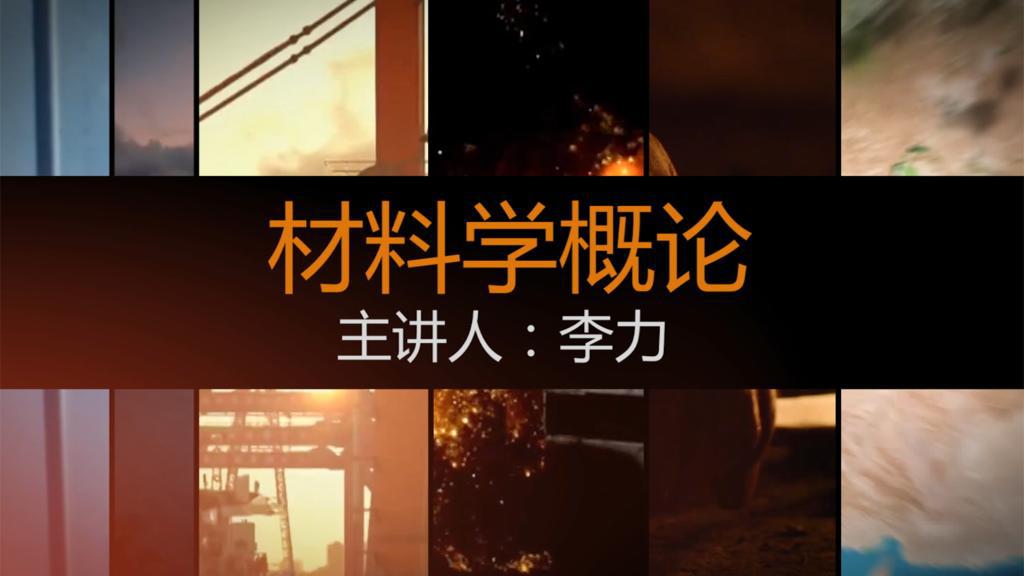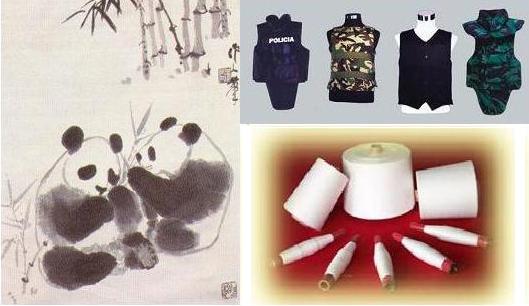
当前课程知识点:3ds Max: A Quick Start from Zero to One > Chapter 5: Basic Skills of Animation > 5.3.2 Animation Technique 2:Loop Animation > 5.3.2
返回《3ds Max: A Quick Start from Zero to One》慕课在线视频课程列表
返回《3ds Max: A Quick Start from Zero to One》慕课在线视频列表
动画技法2
循环动画
大家好
上节课我们介绍了
第一种动画技法
子父子链接
本节课再来向你介绍
第二种
循环动画
想必大家在生活中
经常看到有很多东西
都是以循环动画的形式存在
比如
旋转的螺旋桨
风车以及自转的地球等等
这些都属于循环动画
那么
循环动画该如何做呢
这一讲
就告诉你循环动画的秘诀
一
关键帧打设技法
上一讲
我们为模型
建立好了子父子层级关系
当我们进行旋转测试后
就可以直观的看到动画效果
好了
下面你会怎么做
首先
我们先激活自动关键帧
让时间区处于
动画记录状态
将1号模型旋转制作动画
此时
你会遇到两个问题
关键帧怎么没有被记录
刚才旋了多少度
第一个问题
是因为使用自动关键帧中
0帧不会被自动记录
所以
当你已经打开了
自动关键帧
但又想调调这
挪挪那
不想被记录为关键帧时
将时间滑块滑动到0帧
再调节就没错了
第二个问题嘛
第一章也提到过
建议角度捕捉就一直开着吧
每次旋转的时候
都有度数约束
这样
想让另一边对称就方便多了
问题解决了
我们重新开始吧
打设关键帧
首先
激活自动关键帧
让时间区处于动画记录状态
打开角度捕捉工具
旋转角度的时候
心里就有数了
其次
在0帧处
旋转1号模型至35度角
确定关键帧开始的位置
最后
将时间滑块滑到70帧
旋转1号模型呈-70度角
设置结束关键帧
点击播放按钮
摇摆器旋转一次的动画
就完成了
下面
我们制作循环动画
让摇摆器不停的摆动
二
循环动画
什么是循环动画
在一定时间内
重复播放一段相同的动画
我们称为循环动画
或许你会说
让动画不断的重复播放
复制帧不就可以了
还用学吗
原理对了
但不用劳您大驾
做好一段动画
可以直接交给程序来完成
是不是有种
忙里偷闲的感觉呢
那就赶快来学习一下吧
循环动画制作流程
第一步
在动画关键帧控件中
选择需要循环的动画关键帧
第二步
打开曲线编辑器窗口
此时
你可以看到
这段动画的运动曲线
如果感觉画面太大
曲线没有显示完整
点击
框显值范围选定关键点
就可以使曲线
全部显示到画面中
第三步
在曲线编辑器窗口上
点击
参数曲线超出范围类型图标
设置超出范围的循环模式
激活往返模式后
在曲线编辑器窗口
的动画关键帧
会出现前段动画的虚线效果
播放后
使用往返模式
就可以实现摇摆器
不停摇摆的动画效果了
怎么样
是不是很酷炫
调节动画时长
默认循环的时间帧太少
只能播放4秒
要想增加时长该怎么办呢
还记得前面说到的方法吗
将鼠标放入时间帧上
按住Alt和Ctrl键
同时按住右键
将鼠标向右滑动
就可以增加动画时长了
对了
向左滑动可以减少时长
一定要试试哦
三、其他循环功能
其他循环功能
当你使用参数曲线
超出范围类型的其他功能
超出范围
控制着动画
在关键帧之外的循环方式
例如
恒定模式
就是原始模式
超出范围不进行任何操作
周期模式
超出范围后
会跳转至该范围的开始帧
重复动画效果
如果开始帧和
结束帧的位置不同
便会出现跳帧现象
因此该模式
常用于制作子弹发射类型
的动画效果
循环模式
和周期模式其实没太大区别
唯一不同的是
在开始帧和结束帧之间
将会插入补帧
从而产生平滑的动画效果
往复模式
动画超出范围后
从结束帧倒放至开始帧
不断循环
就像乒乓球一样
因此也称为乒乓模式
线性模式和相对重复模式
一般在初级阶段很少使用
等用到我们在做讲解
四小经验
当你完成一段动画
要制作循环效果时
记得框选帧以后
再打开曲线编辑器窗口
这样视图会直接显示
所选择帧的曲线效果
如果不这样做
找起来会很麻烦哦
通过对
子父子链接和循环动画
这两个动画技巧的学习
你是不是
对制作动画更得心应手了呢
别急
动画还有一个重要的内容
我们将在下节课讲解
那么这节课就到这里了
拜拜
-Fast Understand of 3ds Max,Starting Your Virtual Journey
--Preface
-Preface
-1.1 How to get 3ds Max
--1.1 02
-1.1
-1.2 Introduction to the Interface of 3ds Max
--1.2 01
--3ds Max
-1.2
-1.3.1 Project Preparation 1: Set Up Project Folder
--1.3.1
-1.3.1
-1.3.2 Project Preparation 2:Initialization Settings
--1.3.2
-1.3.2
-1.4.1 Opening and Saving Files
--1.4.1
-1.4.1
-1.4.2 Basics Operation
--1.4.2
-1.4.2
-1.4.3 Advanced Operation
--1.4.3
-1.4.3
-1.5 General Hotkeys
--1.5
-1.5
-1.6 Creating Geometric Primitives
--1.6
-1.6
-2.1 3D Modeling Overview
--2.1
-2.1
-2.2 Three Useful Modeling Methods
--2.2
-2.2
-2.3 Boolean Modeling
--2.3
-2.3
-2.4.1 Spline Modeling 1:Spline Modeling Overview
--2.4.1
-2.4.1
-2.4.2 Spline Modeling 2: Modeling From a Spline
--2.4.2
-2.4.2
-2.4.3 Spline Modeling 3:How to Edit Spline Objects
--2.4.3
-2.4.3
-2.5.1 Polygon Modeling 1:Polygon Modeling Method
--2.5.1
-2.5.1
-2.5.2 Component Selection Techniques
--2.5.2
-2.5.2
-2.5.3 Polygon Modeling 3: 16 Polygon Modeling Commands
--2.5.3
-2.5.3
-2.5.4 Polygon Modeling 4: Subdivision Modeling
--2.5.4
-2.5.4
-2.5.5 Polygon Modeling 5: Attaching and Detaching
--2.5.5
-2.5.5
-2.6.1 Advanced Modeling Skills 1:“Stereoscopic” Modeling Method
--2.6.1 01
-2.6.1
-2.6.2 Advanced Modeling Skills 2:Box Modeling Method
--2.6.2
-2.6.2
-2.6.3 Advanced Modeling Skills 3:Deconstruction Modeling Method
--2.6.3
-2.6.3
-2.6.4 Advanced Modeling Skills 4:Problems to be Considered in Modeling
--2.6.4
-2.6.4
-3.1 Rendering
--3.1 02
-3.1
-3.2.1 Render Your First Work
--3.2.1 02
-3.2.1
-3.2.2 Arnold Render Set Up
--3.2.2 01
-3.2.2
-3.2.3 Introduction to the Arnold Renderer
--3.2.3
-3.2.3
-3.2.4 Arnold Renderer 1: Sampling
--3.2.4 02
-3.2.4
-3.2.5 Arnold Renderer 2: RayDepth and Filtering
--3.2.5 02
-3.2.5
-3.3.1 What is Light?
--3.3.1 02
-3.3.1
-3.3.2 Light and Color
--3.3.2 02
-3.3.2
-3.3.3 Light and Shadow
--3.3.3 02
-3.3.3
-3.3.4 Produces Soft Shadows and Fast Shadow
--3.3.4 02
-3.3.4
-3.3.5 Six Types of Lighting
--3.3.5 01
-3.3.5
-3.4.1 Arnold Light Types
--3.4.1 01
-3.4.1
-3.4.2 Arnold Light Parameters
--3.4.2 01
-3.4.2
-3.4.3 Color Temperatures and White Balance
--3.4.3 01
-3.4.3
-3.5.1 Three-point Lighting Method
--3.5.1
-3.5.1
-3.5.2 Indoor Light Lecture 1: Make a Simple Night
--3.5.2
-3.5.2
-3.6.1 Advanced Skill 1:Rendering Tips
--3.6.1
-3.6.1
-3.6.2 Advanced Skill 2:The Normals and the Smooth Group
--3.6.2
-3.6.2
-4.1 Learn About This Chapter in Four Minutes
--4.1
-4.1
-4.2.1 How to Open the Material Editor?
--4.2.1
-4.2.1
-4.2.2 Using Physical Materials
--4.2.2
-4.2.2
-4.2.3 Three Assistants of the Material
--4.2.3
-4.2.3
-4.2.4 Create a Simple Material
--4.2.4
-4.2.4
-4.3.1 Using maps to Creat Different Looking
--4.3.1
-4.3.1
-4.3.2 Bitmap Node:A Small Node With Virtues
--4.3.2
-4.3.2
-4.4.1 UVW Mapping Method 1:Methods of Locking the Map
--4.4.1
-4.4.1
-4.4.2 UVW Mapping Method 2: UV Overlays
--4.4.2
-4.4.2
-4.4.3 Unwrap UVW 1: Basic of Unwrap UVW Modifier
--4.4.3
-4.4.3
-4.4.4 Unwrap UVW 2: Projection
--4.4.4
-4.4.4
-4.4.5 Unwrap UVW Part 3: Powerful UV Editor
--4.4.5
-4.4.5
-5.1 Animation Overvie
--5.1
-5.1
-5.2.1 3ds Max Animation
--5.2.1
-5.2.1
-5.2.2 Making Animation More Interesting Principle 1: Time and Space
--5.2.2
-5.2.2
-5.2.3 Making Animation More Interesting Principle 2: Slow Motion (slow-mo)
--5.2.3
-5.2.3
-5.2.4 Making Animation More Interesting Principle 3: Squash and Stretch
--5.2.4
-5.2.4
-5.3.1 Animation Technique 1: Parent-Child Relationship
--5.3.1
-5.3.1
-5.3.2 Animation Technique 2:Loop Animation
--5.3.2
-5.3.2
-5.4.1 Techniques of Using the Camera
--5.4.1
-5.4.1
-5.4.2 The Safeframe Cannot Be Ignored in the Camera
--5.4.2
-5.4.2
-5.4.3 Camera Movement
--5.4.3
-5.4.3
-5.4.4 Following Shot
--5.4.4
-5.4.4
-6.1 Rendering a VR Panorama With Arnold
--6.1
-6.1
-6.2 Fast Implementation of VR Interaction
--6.2
-6.2
-6.3 Fast Implementation of AR Interaction
--6.3
-6.3
-6.4 Friends of 3ds Max
--6.4
-6.4
-6.5 Self Learning and Improvement Methods
--6.5
-6.5
-6.6 Methods of Obtaining Resources
--6.6
-6.6
-7.1 PBR Technology Introduction
--7.1
-7.2 Toolbag PBR Real-time Rendering
--7.2
-7.3 Substance Painter PBR Painting
--7.3
-Shortfilm Casestudy 1:The Weapon Used in PUBG (PlayerUnknown's Battlegrounds)
--Microfilm Course 1:The Weapon Used in Eating Chicken
-Shortfilm Casestudy 2:Production experience of Classic of Mountains and Seas
--Microfilm Course 2:Production Process of Shanhaijing
-Examination

